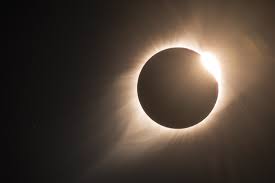People can verify their ground observations through VELC’s data and observations: Prof. R.Ramesh, Principal Investigator VELC Payload onboard ISRO's Aditya L1 mission
By Anubha Jain | Published: April 9, 2024 11:46 AM2024-04-09T11:46:21+5:302024-04-09T11:47:51+5:30
A rare celestial event occured yesterday when the moon passes directly between the earth and the sun. During today's ...

People can verify their ground observations through VELC’s data and observations: Prof. R.Ramesh, Principal Investigator VELC Payload onboard ISRO's Aditya L1 mission
A rare celestial event occured yesterday when the moon passes directly between the earth and the sun. During today's solar eclipse, the sun will be completely covered by the moon for a short period, causing darkness for a few moments in many countries. The Sun, Moon, and Earth will line up in a straight line. This creates a total solar eclipse. India's solar mission, Aditya-L1, is unique in observing the Sun and uses the opportunity to observe the Sun's behavior and rays during an eclipse. Four months after launch, Aditya-L1 reached the Lagrangian point (L1), about 1.5 million kilometers from Earth. The L1 suite of instruments will provide an opportunity to study the Sun. The Aditya L1 mission aims to increase our understanding of the effects of solar phenomena, including the solar corona and photosphere. It also studies the effects of the solar wind and associated radiation. It is loaded with critical instruments and is tracking and observing the Sun. The important payload of the Aditya L1 mission is the Visible Emission Line Coronagraph VELC.
In an exclusive interview with Lokmat Representative Dr. Anubha Jain, Prof. R.Ramesh, Senior Professor at the Indian Institute of Astrophysics, Bengaluru & Principal Investigator VELC Payload onboard ISRO's Aditya L1 mission, shared his views regarding Aditya L1's role in understanding more and studying vital happenings during this eclipse. Prof. Ramesh said, “Through L1 point we get an opportunity to study the solar corona continuously on a 24x7 basis, unlike ground-based observations. At this L1 point, the gravitational force of attraction between the Sun and the Earth is perfectly balanced and is a relatively stable location. From here, an uninterrupted view of the Sun’s outer layer (called the corona, which is observable from the ground only during total solar eclipses) is possible by artificially blocking the bright light coming from the solar photosphere layer of the sun.” He further said as the VELC is located between the Sun and the Moon the eclipse people will witness from the ground will have no significance for the VELC. It would be a routine observation of the sun like any other day. People can observe the solar corona from the ground for four to five minutes. However, they can verify their observations through VELC’s data and observations.